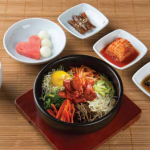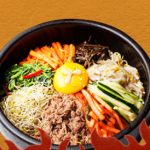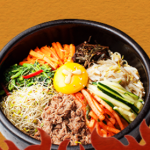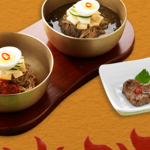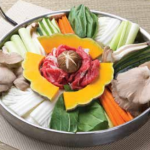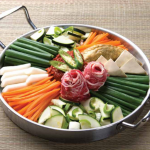Korean cuisine is a vibrant and diverse culinary tradition that has captivated the tastebuds of food enthusiasts all over the world. From fiery and spicy flavors to hearty and comforting dishes, the gastronomic delights of Korean cuisine have gained immense popularity. In this article, we will explore some of the most iconic dishes that come to mind when we think of Korean cuisine.
Introduction
Korean cuisine is deeply rooted in its ancient agricultural history, rich culture, and culinary traditions. With a wide array of flavors and techniques, Korean dishes offer a unique and adventurous experience for food lovers. From the sizzling barbecues to the flavorful stews, Korean cuisine has something to satisfy every palate.
The Unforgettable Flavors of Kimchi
No exploration of Korean cuisine would be complete without mentioning the iconic dish of kimchi. Considered a national treasure, kimchi is a traditional fermented side dish made from vegetables, most commonly cabbage. Bursting with flavors and health benefits, kimchi is a staple in Korean households. Its tangy, spicy, and slightly sour taste leaves an unforgettable impression on anyone who tastes it.
The Sizzle of Bulgogi
Bulgogi, which translates to “fire meat,” is another remarkable dish that has gained worldwide acclaim.The dish is prepared by marinating thin slices of tender beef in a delectable mixture of soy sauce, sesame oil, garlic, and other spices. The meat is then grilled to perfection, imparting a smoky and caramelized flavor. Served with rice and a variety of side dishes, bulgogi truly showcases the art of Korean barbecue.
Delightful Bibimbap
Bibimbap, meaning “mixed rice,” is a colorful and wholesome dish that brings together an assortment of fresh ingredients. It typically consists of a bed of steamed rice topped with sautéed vegetables, seasoned meat, and a fried egg. The dish is completed with a tangy and spicy gochujang sauce that adds a burst of flavor. Bibimbap not only looks visually appealing but also offers a symphony of textures and tastes.
Embracing the Soul of Korean Comfort Food: Jjigae
Jjigae refers to a variety of Korean stews, simmered to perfection with an abundance of ingredients. Whether it’s kimchi, soybean paste, or soft tofu, these stews exhibit a harmonious blend of flavors that can warm both the body and the soul. Jjigae dishes are typically enjoyed communally, fostering a sense of togetherness and connection among diners.
The Flaming Temptation of Samgyeopsal
Samgyeopsal, a mouthwatering pork belly dish, is a quintessential part of Korean barbecue culture. Thinly sliced pork belly is grilled at the table, allowing diners to fully enjoy the sizzling and aromatic experience. The succulent and fatty pork is often wrapped in fresh lettuce leaves, accompanied by condiments and ssamjang, a savory bean paste. Samgyeopsal is not only a delicious delight but also a cultural and social experience.
Conclusion
Korean cuisine is a treasure trove of iconic dishes that continue to captivate food enthusiasts around the globe. From the vibrant flavors of kimchi to the sizzle of bulgogi, each dish offers a unique and memorable culinary experience. Whether you are seeking spicy and fiery flavors or comforting and satisfying meals, Korean cuisine has it all.
FAQs about Korean Cuisine
1. What makes kimchi so unique in Korean cuisine?
Kimchi is unique in Korean cuisine due to its fermentation process, which enhances its flavors and increases its nutritional value. It is also an integral part of Korean culture and is served with almost every meal.
2. Is Korean cuisine only about spicy dishes?
While Korean cuisine is known for its spicy flavors, it is not solely limited to spicy dishes. There is a wide range of dishes, including mild and non-spicy options to cater to different taste preferences.
3. Can vegetarians enjoy Korean cuisine?
Yes, vegetarians can enjoy Korean cuisine. There are several vegetarian-friendly dishes like Bibimbap (without meat), Japchae (stir-fried glass noodles with vegetables), and Kimbap (Korean rice rolls) that offer delightful flavors and textures.
4. Are there any dessert options in Korean cuisine?
Yes, Korean cuisine offers a variety of dessert options. Popular choices include Bingsu (shaved ice dessert with various toppings), Hotteok (sweet pancake with a filling), and Gyeongdan (rice cake balls coated in bean powder or sesame).
5. How important is rice in Korean cuisine?
Rice holds great significance in Korean cuisine and is considered the staple food. It is typically served with every meal and acts as the foundation for many dishes like bibimbap, kimbap, and fried rice.
Explore the culinary wonders of Korean cuisine and embark on a flavorful journey that will delight your taste buds and expand your gastronomic horizons. Immerse yourself in the cultural richness of Korea through its iconic dishes, and let the vibrant flavors transport you to a land of culinary bliss.
Selamat menikmati! (Enjoy your meal!)

